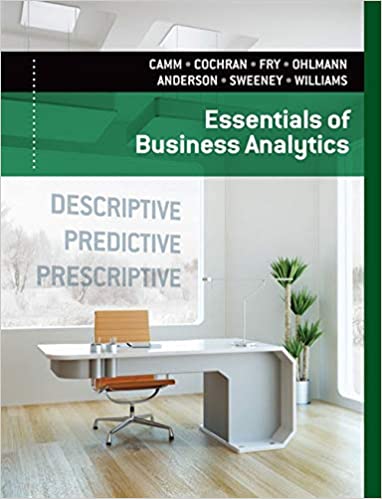
Essentials of Business Analytics 1st Edition by Jeffrey Camm,James Cochran,Michael Fry,Jeffrey Ohlmann ,David Anderson
Edition 1ISBN: 978-1285187273
Essentials of Business Analytics 1st Edition by Jeffrey Camm,James Cochran,Michael Fry,Jeffrey Ohlmann ,David Anderson
Edition 1ISBN: 978-1285187273 Exercise 10
In Problem, if P ( s 1 ) = 0.25, P ( s 2 ) = 0.50, and P ( s 3 ) = 0.25, find a recommended decision for each of the three decision makers. ( Note: For the same decision problem, different utilities can lead to different decisions.)
Problem
Three decision makers have assessed utilities for the following decision problem (payoff in dollars):

The indifference probabilities are as follows:

a. Plot the utility function for money for each decision maker.
b. Classify each decision maker as a risk avoider, a risk taker, or risk neutral.
c. For the payoff of 20, what is the premium that the risk avoider will pay to avoid risk What is the premium that the risk taker will pay to have the opportunity of the high payoff
Problem
Three decision makers have assessed utilities for the following decision problem (payoff in dollars):

The indifference probabilities are as follows:

a. Plot the utility function for money for each decision maker.
b. Classify each decision maker as a risk avoider, a risk taker, or risk neutral.
c. For the payoff of 20, what is the premium that the risk avoider will pay to avoid risk What is the premium that the risk taker will pay to have the opportunity of the high payoff
Explanation
The calculation of utilities for decisio...
Essentials of Business Analytics 1st Edition by Jeffrey Camm,James Cochran,Michael Fry,Jeffrey Ohlmann ,David Anderson
Why don’t you like this exercise?
Other Minimum 8 character and maximum 255 character
Character 255


